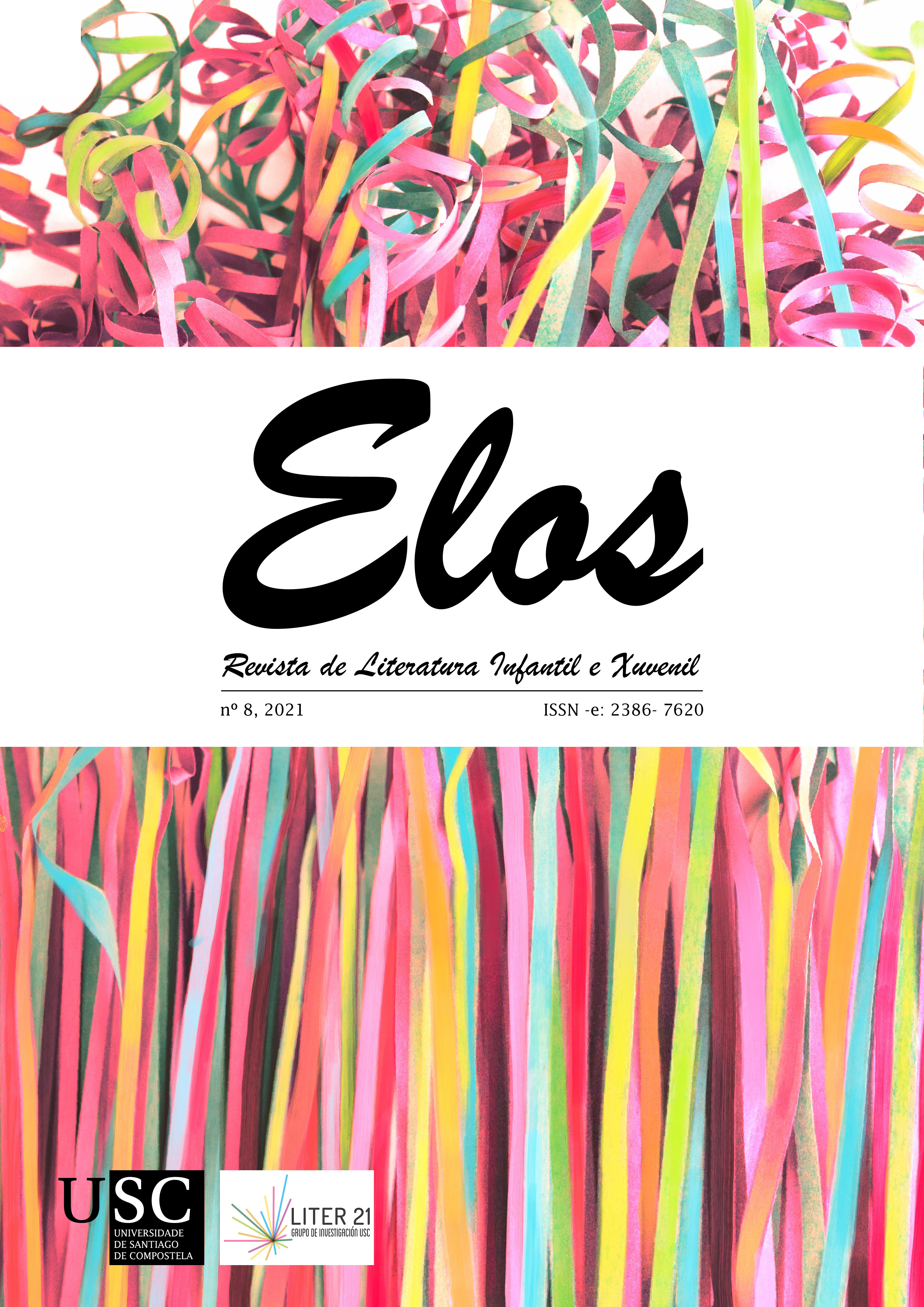Leave the kids alone: the censorship of children’s books with LGBTIQ+ themes
Main Article Content
Abstract
On October 19, 2019, Paul Dorr broadcast live on Facebook a protest action in which he burned four books for children with LGBTIQ+ themes, which he had ordered from the public library in Orange City, Iowa. Some of these books are frequently featured in the annual lists of the ten most censored books in US public libraries, which include almost exclusively books for children and youth, and most contain LGBTIQ+ themes and/or characters. Thus, this article starts from an analysis of the themes and characteristics of the most censored books in the US, through lists compiled since 2001 by the American Library Association, to contextualize the issue of censorship of books for children with LGBTIQ+ themes, highlighting how they became predominant on these lists over the past few years. Starting from the classic question of the dual addressee that indelibly influences the literary subsystem of literature for children (Shavit, 2004), the characteristics that, on the one hand, show the importance of the presence of these themes in literature for children are discussed (Bartholomaeus and Riggs, 2019; Madalena and Ramos, 2021), but which, on the other hand, make it an ideological battleground (Stephens, 2018).
Keywords:
Article Details
References
Bartholomaeus, C., e Riggs, D. W. (2019). ‘Girl brain … boy body’: representations of trans characters in children’s picture books. Em R. Pearce, I. Moon, K. Gupta, e D. L. Steinberg (Eds.), The Emergence of Trans: Cultures, Politics and Everyday Lives (pp. 135–148). Routledge.
Brill, S., e Pepper, R. (2008). The transgender child. Cleis Press Inc.
Brugeilles, C., Cromer, I., e Cromer, S. (2002). Male and Female Characters in Illustrated Children’s Books or How children’s. A literature contributes to the construction of gender. Population, 57 (2), 237-267.
Cano Oncala, G., Esteva Antonio, I., e Bergero, T. (2006). Reflexiones psicológicas sobre el proceso transexual mujer a hombre. Em E. Gómez-Gil e I. E. Antonio (Eds.), Ser transexual (pp. 251-267). Glosa.
Chatton, B. (2001). Picture Books for Preschool Children: Exploring Gender Issues with Three- and Four-Year-Olds. Em S. Lehr (Ed.), Beauty, brains and brawn: the construction of gender in children’s literature (pp. 57-66). Heinemann.
Evans, J. (2015). Challenging and controversial picturebooks: creative and critical responses to visual texts. Routledge.
Gavilán, J. (2018). Infancia y transexualidad. Ediciones Mágina.
Gill-Peterson, J. (2018). Histories of the Transgender Child. University of Minnesota Press.
Hamilton, M. C., Anderson, D., Broaddus, M., e Young, K. (2006). Gender stereotyping and under-representation of female characters in 200 popular children’s picture books: A twenty-first century update. Sex Roles, 55 (11–12), 757–765.
Johnston, R. R. (2011). Gender. In M. O. Grenby e K. Reynolds (Eds.), Children’s Literature Studies: A Research Handbook (pp. 151–161). Palgrave Macmillan.
Lehr, S. (2001). The Hidden Curriculum: Are We Teaching Young Girls to Wait for the Prince? Em S. Lehr (Ed.), Beauty, brains and brawn: the construction of gender in children’s literature (pp. 1–20). Heinemann.
Madalena, E. e Ramos, A. M. (2021). Gender Diversity in Picturebooks: Challenges of a Taboo Topic in Portuguese Schools. Em G. Haaland, B. Kümmerling-Meibauer, e Å. M. Ommundsen (Eds.), Exploring Challenging Picturebooks in Education: International Perspectives on Language and Literature Learning (pp. 143–160). Routledge.
McCabe, J., Fairchild, E., Grauerholz, L., Pescosolido, B. A., e Tope, D. (2011). Gender in twentieth-century children’s books: Patterns of disparity in titles and central characters. Gender and Society, 25 (2), 197–226.
Narahara, M. (1998). Gender Bias in Children’s Picture Books: A Look at Teachers’ Choice of Literature. https://files.eric.ed.gov/fulltext/ED419247.pdf
Norton, J. (1999). Transchildren and the Discipline of Children’s Literature. The Lion and the Unicorn, 23 (3), 415–436.
Nunes, A. F. R. (2017). Era uma vez… Estereótipos de Género nos Livros Infantis. ISCTE-IUL.
Paynter, K. C. (2011). Gender Stereotypes and Representation of Female Characters in Children’s Picture Books. Liberty University.
Platero, R. (2014). Trans*exualidades: Acompañamiento, factores de salud y recursos educativos. Bellaterra.
Ramos, A. M., Mourão, S., e Cortez, M. T. (Eds.). (2017). Fractures and disruptions in children’s literature. Cambridge Scholars Publishing.
Reynolds, K. (2007). Radical children’s literature: future visions and aesthetic transformations in juvenile fiction. Palgrave Macmillan.
Rodrigues, P. (2003). Questões de género na infância. Instituto Piaget.
Scott, K. P. (1986). Effects of Sex-Fair Reading Materials on Pupils’ Attitudes, Comprehension, and Interest. American Educational Research Journal, 23 (1), 105-116.
Shavit, Z. (2004). Poética da Literatura para Crianças. Caminho.
Stephens, J. (2018). Picturebooks and Ideology. Em B. Kümmerling-Meibauer (Ed.), The Routledge Companion to Picturebooks (pp. 137–145). Routledge.
Weitzman, L. J., Eifler, D., Hokada, E., e Ross, C. (1972). Sex-Role Socialization in Picture Books for Preschool Children. American Journal of Sociology, 77 (6), 1125-1150.







